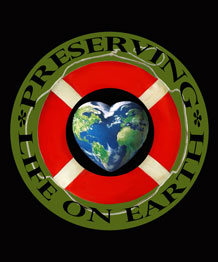February 26, 2013

Biologists have found a 78 percent drop in leatherback turtle nests at their primary nesting site. There is concern that the largest marine turtle in world may vanish.





Cool video showing how to paint a snake in 1 stroke!
The recent discovery of the biggest Burmese python ever found in Florida is convincing evidence of just how well established these highly destructive reptiles have become in Everglades National Park and other parts of South Florida, according to Florida scientists.
The snake was 17 feet 7 inches (5.35 meters) long and weighed 164 1/2 pounds (76 kilograms). Scientists recovered 87 eggs from the snake also a record for the state. The pythons are surviving a long time in the wild, said snake expert Kenneth Krysko of the Florida Museum of Natural History. There’s nothing stopping them.
About 1,825 Burmese pythons were discovered in Everglades National Park from 2000 to 2011. However, scientists think the python population is many times higher.
International World Water Day is held annually on March 22 as a means of focusing attention on the importance of freshwater and advocating for the sustainable management of freshwater resources.
FAQ: (Found On UN Water Website)
– Why is water a key to food security?
– How much water is needed to produce our food?
– How is the global demand for food evolving?
– How does water scarcity affect our food security?
– What effect does climate change have on our food security?
– Is the competition for water increasing?
– How has the Green Revolution degraded our land and water
while allowing to supply more food?
– But can we produce more food with less water?
– Can we re-use and recycle water in food production?
– How can we protect this precious resource?
– How can we prepare for climate changes and natural disasters?
– Are there ways to improve the integration of different food production systems and increase water productivity?
– Finally, how can we reduce the waste?
Four new chameleon species found in Madagascar with an average adult length of an inch from snout to tail, which are among the tiniest reptiles in the world!
For the complete story, click here.